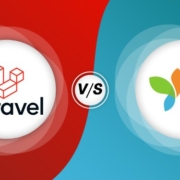In scanning the IT landscape, the call for DevOps engineers remains toward the top of many companies’ priorities. A nationwide search through various job posting sites returns literally thousands of DevOps opportunities. However, reviewing these job postings shows that the skillsets required are widely varied. In comparison, software development job descriptions and requirements tend to have a narrower focus – broadly speaking, a language and a particular framework. DevOps job descriptions and requirements range from implementing continuous integration and continuous delivery (CI/CD) processes, to building infrastructure, to configuration management, to cloud operations, to writing code in any number of languages, and so on. It’s an impressive and intimidating list. Have you considered joining the DevOps wave but have been challenged in getting a clear picture of what DevOps is or means? If so, you’re not alone.
What is DevOps?
While many organizations have DevOps teams, even within a single organization, there are likely to be multiple roles within a DevOps team. Why is that? The reason is that DevOps is a process, and various roles within a DevOps team each contribute to the process. The DevOps process is a product of the evolution of Agile development processes. With Agile, production-quality software is iteratively delivered, which drives the need to deploy software more often. The process of getting software into production needed to be streamlined, thus the DevOps movement and process was born.










